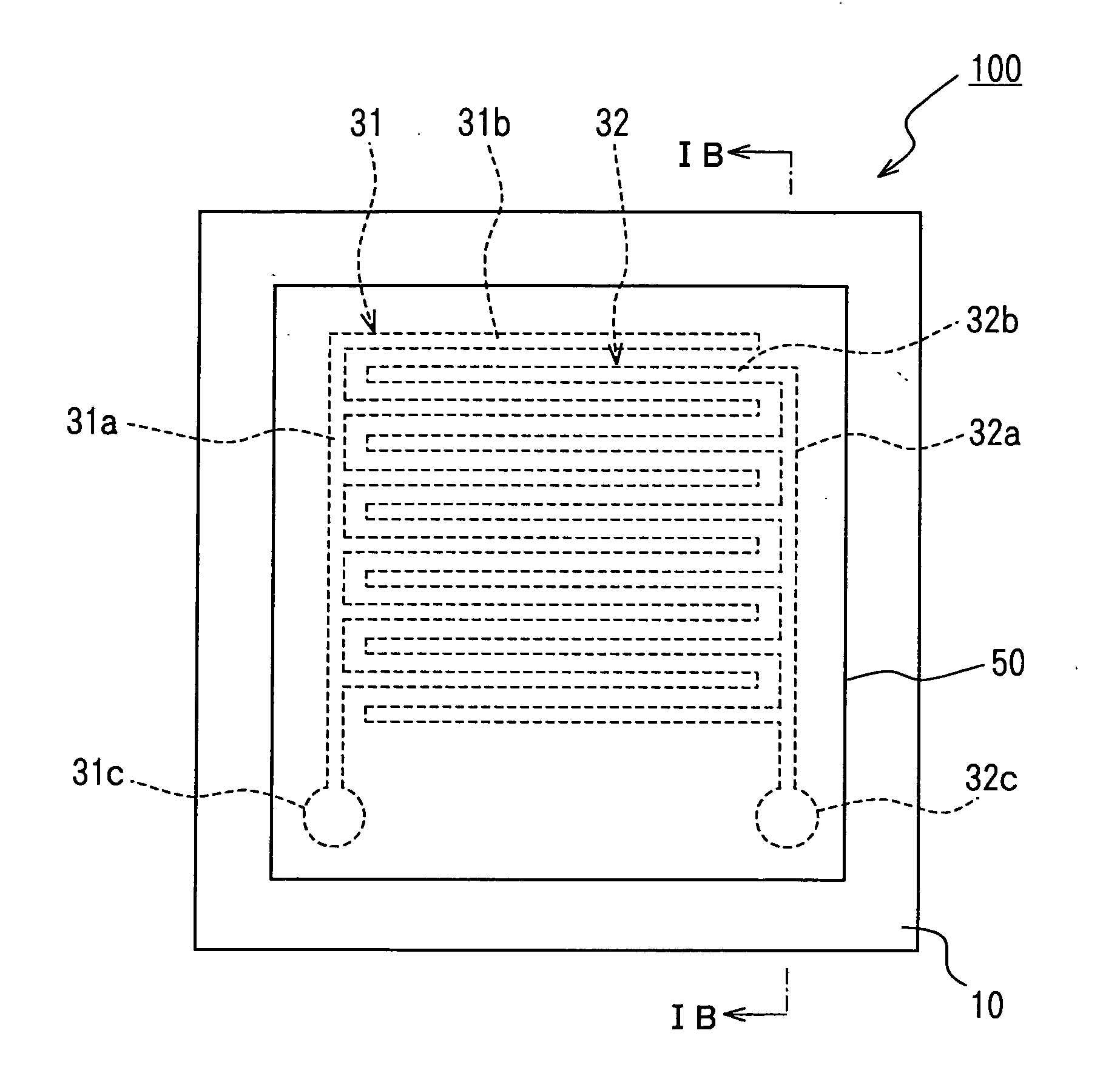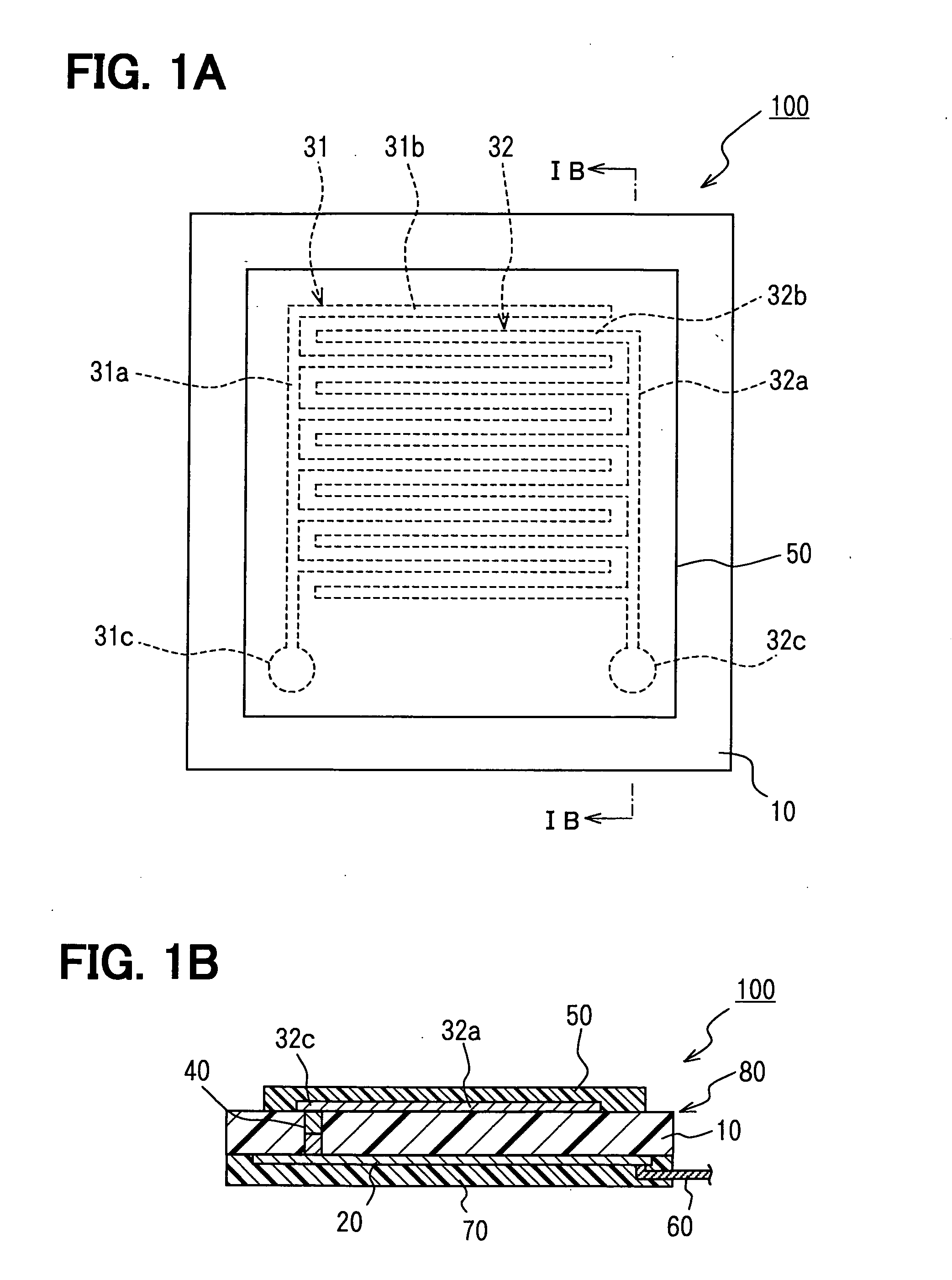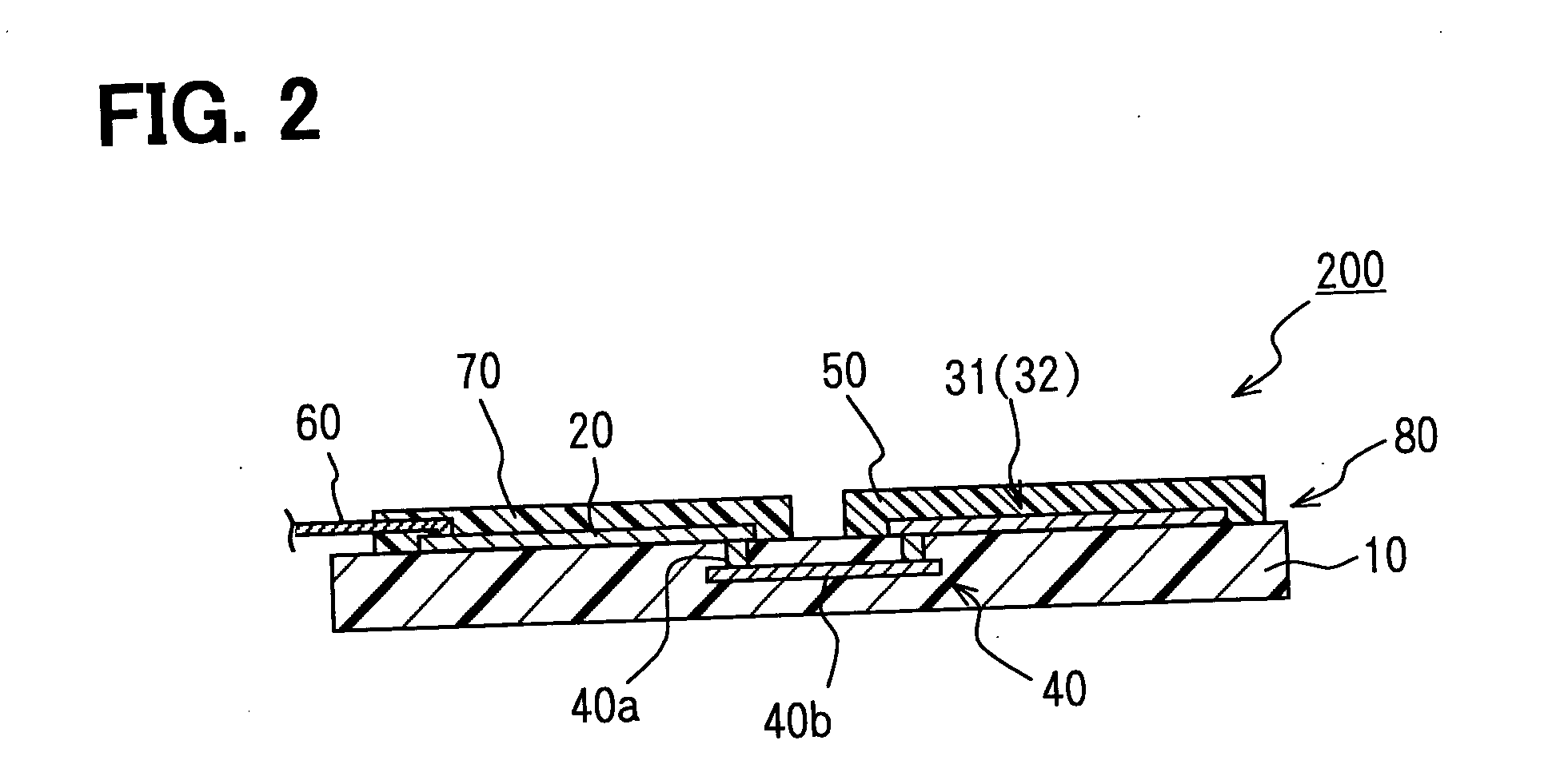Capacitive humidity sensor
a humidity sensor and capacitive technology, applied in the field of capacitive humidity sensors, can solve the problems of difficult to reduce the whole size of sensors including circuit sections, and high cost of semiconductor substrates, so as to reduce the size and low cost
- Summary
- Abstract
- Description
- Claims
- Application Information
AI Technical Summary
Benefits of technology
Problems solved by technology
Method used
Image
Examples
first embodiment
[0017] A capacitive humidity sensor 100 according to the first embodiment of the present invention is shown in FIGS. 1A and 1B. In this embodiment, an electrical insulating material commonly used for a printed circuit board (PCB) is typically used as an insulating substrate 10. As an example, in the sensor 100, the insulating substrate 10 is formed from multiple layers (e.g., two layers in this embodiment) of thermoplastic resin films, which are made of liquid crystal polymer (LCP) and laminated together under pressure and heat.
[0018] A circuit section 20 is formed on one surface of the insulating substrate 10 as a part of a circuit pattern of a printed circuit board 80. The circuit section 20 performs a signal processing of a capacitance change between a pair of electrodes 31, 32. The circuit section 20 is composed of the part of the circuit pattern and electronic components (not shown) mounted thereon. In order to form the circuit section 20, conductive foil is bonded to a surfac...
second embodiment
[0035] A capacitive humidity sensor 200 of the second embodiment will be now described with reference to FIG. 2.
[0036] In the sensor 100 of the above-described first embodiment, the electrodes 31, 32 and the circuit section 20 are formed on different surfaces of the insulating substrate 10. In contrast, in the capacitive humidity sensor 200 of the second embodiment, electrodes 31, 32 and a circuit section 20 are formed on the same surface of an insulating substrate 10.
[0037] In the sensor 200, the electrodes 31, 32 and the circuit section 20 are electrically connected through wiring sections 40 formed in the insulating substrate 10. The electrodes 31, 32, a humidity sensitive layer 50, the circuit section 20 and the wiring sections 40 are integrated to the insulating substrate 10. Therefore, the whole size of the sensor 200 including the circuit section 20 can be effectively reduced.
[0038] As shown in FIG. 2, a connection material is filled in via holes to form connection portion...
PUM
 Login to View More
Login to View More Abstract
Description
Claims
Application Information
 Login to View More
Login to View More - R&D
- Intellectual Property
- Life Sciences
- Materials
- Tech Scout
- Unparalleled Data Quality
- Higher Quality Content
- 60% Fewer Hallucinations
Browse by: Latest US Patents, China's latest patents, Technical Efficacy Thesaurus, Application Domain, Technology Topic, Popular Technical Reports.
© 2025 PatSnap. All rights reserved.Legal|Privacy policy|Modern Slavery Act Transparency Statement|Sitemap|About US| Contact US: help@patsnap.com



